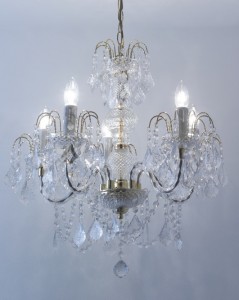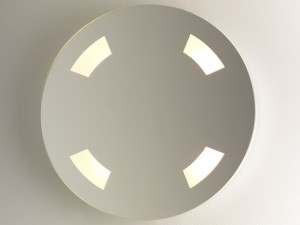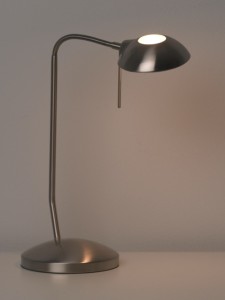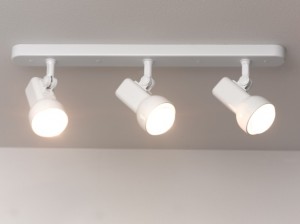Planning lighting
Planning lighting to the best effect in your home is important for both aesthetic and practical reasons. Good lighting makes the best use of natural light, as well as artificial light, and lighting plans need to give equal consideration to both resources. If you are carrying out a full renovation of your home, plan the lighting at the same time as the plumbing. Mark existing sockets and where you need more, as many houses simply don’t have enough sockets, and overloading them with too many appliances should always be avoided.Walk around your house and ask yourself who uses each room, when do they use it and for what reason? Next, draw a plan to help you decide how you can improve your lighting. It doesn’t have to be to scale and you should take your lighting plan with you when you shop for suitable fixtures.
If you are simply doing a bit of updating, or, are on a tight budget, bear in mind that if you cannot change your lighting fixtures, it is still possible to adapt your lighting to work better. Below are a number of points worth considering when planning lighting in your home.
Lighting tips

Chandeliers – not for everyone, but certainly one of the most decorative lighting options.
Place a light switch where it should ideally be. It is frustrating to fumble in the dark for a switch that doesn’t exist or is badly placed.
How do you want to control your lighting? Do you want to control your lights with a single switch, or switch them individually, or do you want dimmer switches?
Create a lighting plan for a room and draw on arrows in the direction in which people will be facing to watch television, to work at a desk or to read by a window in a favourite chair.
For reading, older eyes require more light than younger eyes .
Think about practicalities like how you are going to change bulbs in ceiling fittings in very lofty rooms.
Good lighting can transform a dark room into a welcoming space. Consider all the ways in which your rooms are used through the day, so that at the flick of a switch you can transform a bright, vibrant living space into a relaxed place to spend the evening.
Consider each room separately, and remember that light should link rooms together and that it’s not ideal for a person to move from a brightly lit room into the dark.
Natural light
-

Mirrors – great to reflect light, and this one has further lighting for use as a bathroom mirror.
Our grey northern light (if you’re in the UK!) means that we don’t have to worry about screening strong sun, but daylight changes throughout the year and the quality of natural light in your room can be affected by the room’s aspect and how and when the sun filters into it.
- Natural light in a north-facing room is cold and clear (again, UK), while in an east-facing room it will be bright in the early morning followed by long shadows and no sun in the late afternoon. For the best natural light, rooms in which you spend most time should face south for warm light all day long.
- West-facing rooms are sunniest at midday while in late afternoon shadows will lengthen and light will be softer.
- Make the most of daylight by removing unnecessary curtains and replacing them with light-diffusing filmy voiles and muslins.
- Mirrors reflect natural light, while light-reflective surfaces and pale carpets and furnishings give an impression of light.
- Install a fanlight over your front door, glaze an inner door, cut back overshadowing greenery, turn a window into French doors, or install skylights to bring sunlight inside.
Task lighting

Angle-poise lamps – ideal task lighting for desks.
Task lighting is for specific jobs like reading, working at a computer and cooking.
Â
For good directed light consider a fully adjustable cantilevered angle-poise lamp that can be angled and lowered and is tall enough to illuminate the task in hand without casting a shadow.
Â
In an area where you write, place a lamp opposite your writing hand so that you don’t create a shadow.
Â
If you work from home, you will need good task lighting as well as plenty of natural light. Put your desk about 1m away from the window so that daylight is not too intense.
Accent lighting
- Accent light is used to add variety and focus to background light. An array of halogen spotlights, downlighters and uplighters, tracks and table lamps and standard lights can create shadowy corners and bright pools of light where impact is required.
-

Directional spotlights – great for ambiance, and easy to adjust direction.
When the basic lighting requirements are in place, then you can highlight your favourite things. Illuminate glass shelves with low voltage halogen spotlights, or hidden fluorescent strips. Clip spotlights to the underside of shelves, or put wall washers in the ceiling to light books. Mount adjustable spotlights on a ceiling track and direct towards paintings; light them with ‘eyeball’ spotlights set to a broad flood beam.
- Buy tiny ‘spike’ lights for houseplant pots, or light a large pot with a floor-mounted spotlight so that light bounces from floor to ceiling and through the foliage, making dramatic shadows.
Low energy lighting
- Change to low energy bulbs. CFL stands for compact fluorescent lamp and is a small fluorescent light bulb that uses much less energy than a traditional bulb.
- Dimmable CFLs are available and if you want to use a CFL outside, check that it is rated for outside use. All CFLs can be recycled.
- A CFL uses approximately a fifth of the wattage to produce the same light. A traditional 60 watt bulb can be replaced with an 11 watt CFL.
- A lumen rating is the measure of light a bulb puts out. Buy CFLs with the same lumen rating as the bulbs you are replacing.
- A large, high-ceilinged room will be cosier if small lamps are clustered to make low pools of light, or pierced lanterns and shades are arranged to shadow pattern on the walls and ceilings.
The above should provide you with a little food for thought on planning lighting in your home. Take some time when making your choices as the options on the market are huge and, as always, go for as much quality as your budget will allow.
